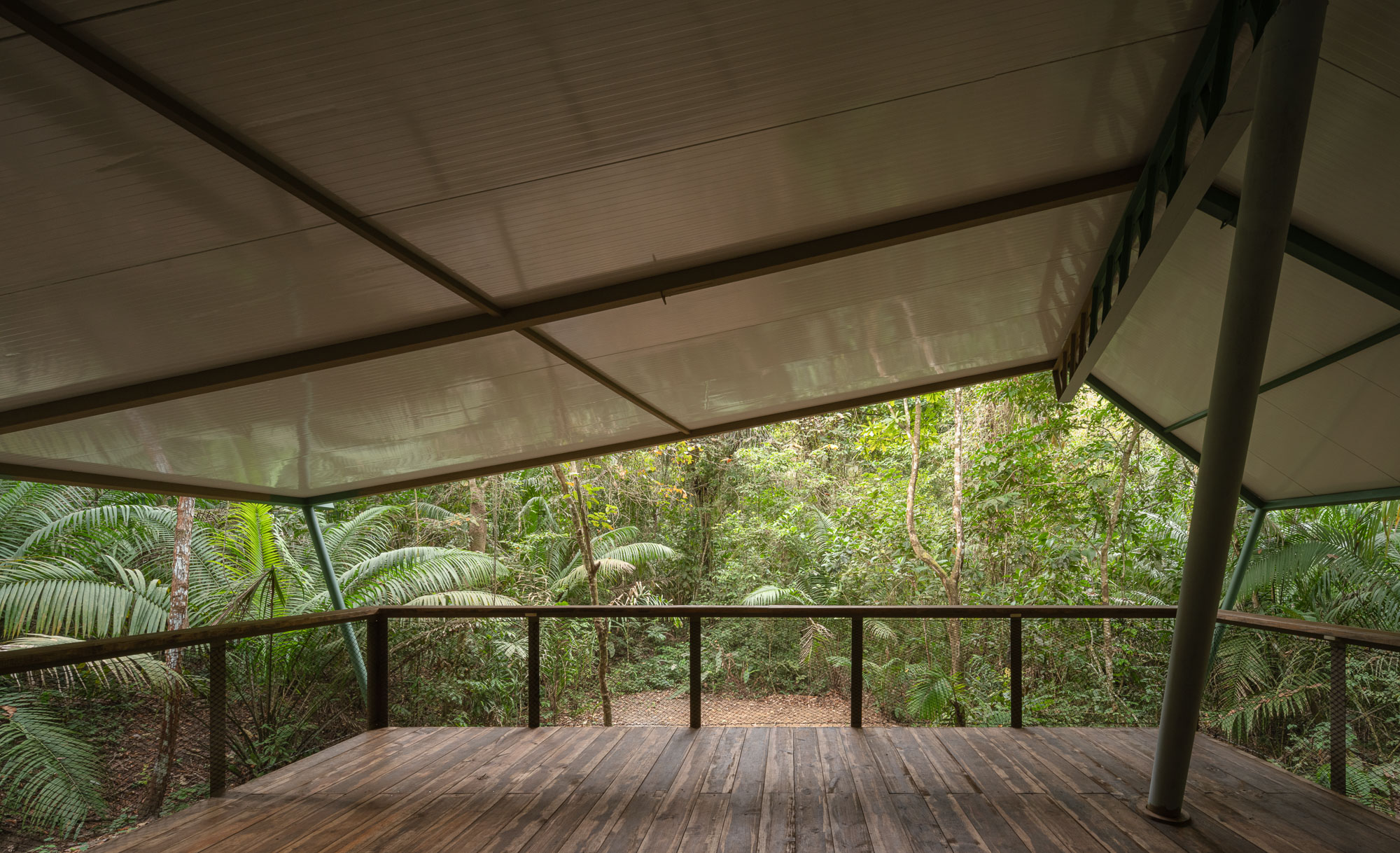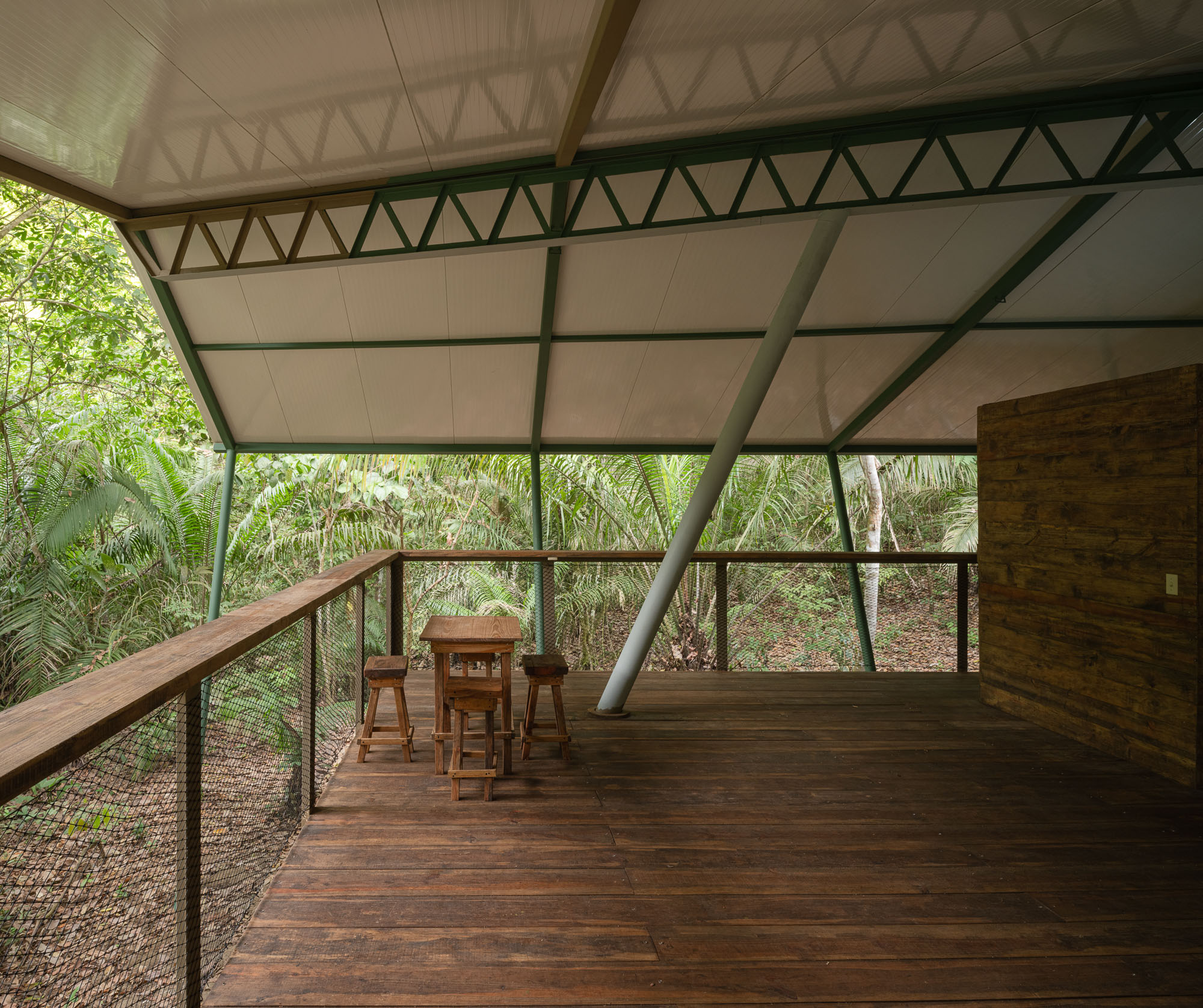Shelter in the rainforest.
Team:
Héctor Ayarza
Álvaro Guerra Jované
Adams Acevedo
Fernando Rivas
Location:
Colon, Panama
Type:
Cultural architecture
Year:
2023
Status:
Built
Area:
135.00 m²
Photos:
Fernando Alda
“Tall, green, complex-looking, and surprisingly dark inside... Feeling just a little claustrophobic beneath the dense foliage above... Strange bird sounds heard over a cacophony of calling insects... A screeching parrot flock dashes overheard... Tree trunks propped up by tall, flaring roots... No thick ground or shrub cover, actually rather easy to talk among the widely spaced trees...”

Designed to accommodate tour guide training uses, this building is part of a campus immersed in the Panamanian tropical rainforest, which offers a series of ecotourism amenities such as trails, an observation tower, and a visitor center for the interpretation of the area's natural heritage. This campus is managed by the Eugene Eisenman Avifauna Foundation.
Formally, the project consists of two main elements. On the one hand, the large gable roof, which is supported only by two main columns and a large central beam that also functions as a support for the ridge, is dropped on both sides downward, forming two hyperbolic paraboloids, whose construction with rigid sheets of thermopanel represents a challenge and a requirement that takes the material to its maximum performance, in optimal terms. Under the roof there is an elevated wooden platform that welcomes visitors and allows collective uses for teaching, food preparation and consumption, rest and storage; all that is needed is to adapt the space.

The shelter is conceived to maintain not only a visual but also an emotional relationship with the forest. The visitor will always be in a condition of luminous contrast, in the day the foliage of the forest will be bright and the interior will be in a pleasant semi-darkness and at night the indirect lights on the lower face of the roof will offer enough light to inhabit the space and the forest will be in a dense darkness. This architecture manifests itself with the minimum, but the essentials to be an inhabited space.

The production of this space has been a wonderful journey that among the managers, curators, builders and now users of the work have contributed from their social and cultural realities valuable knowledge that have made this site not only a destination, but also a starting point for the discovery of the tropical rainforest, ecotourism and environmental education in Panama.
--
Kricher, J. C., Jaramillo, A., Davis, W. E., Jr, Segura, L., & Plotkin, M. J. (2006). Neotropical companion. Spanish.
Plans









Photos












